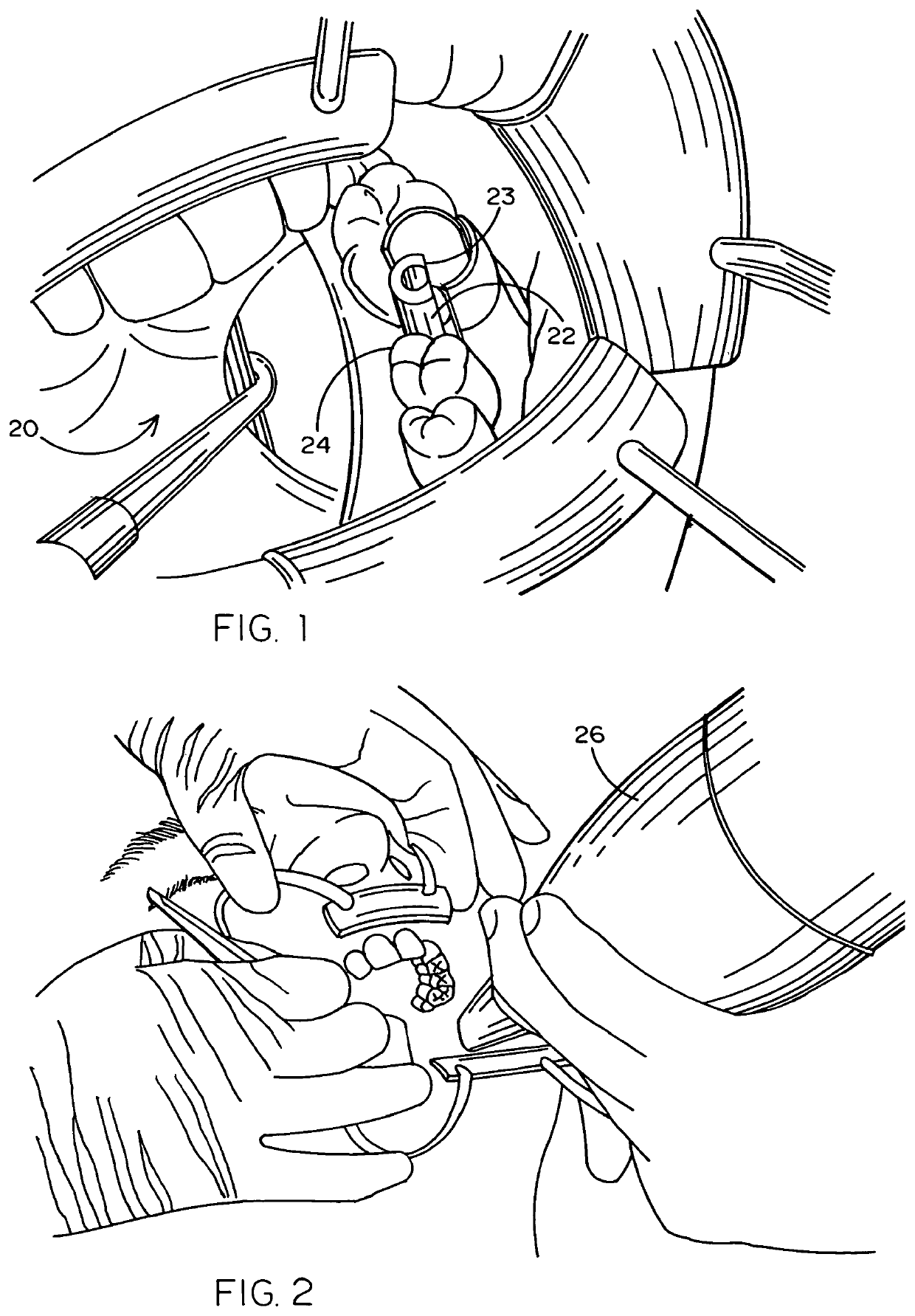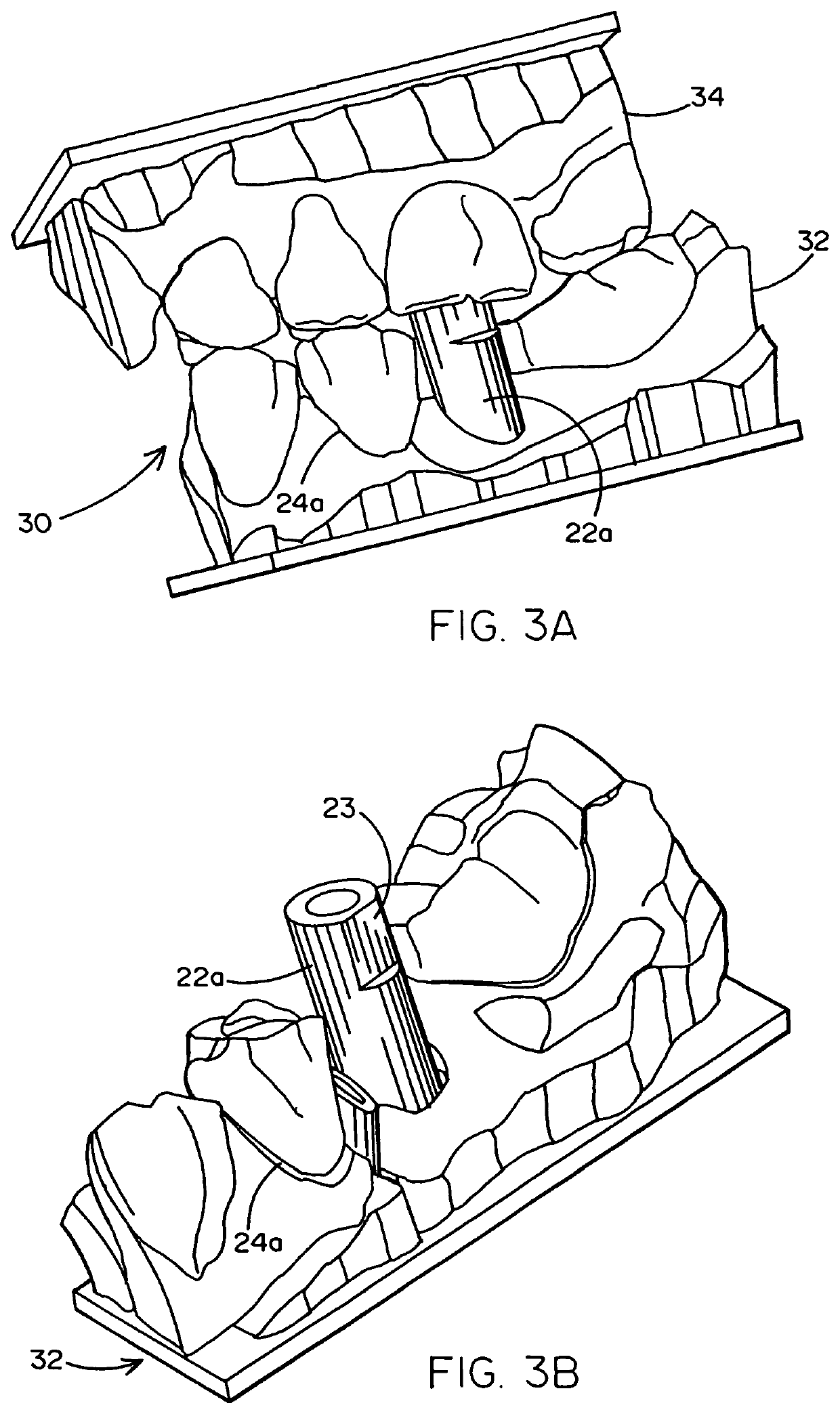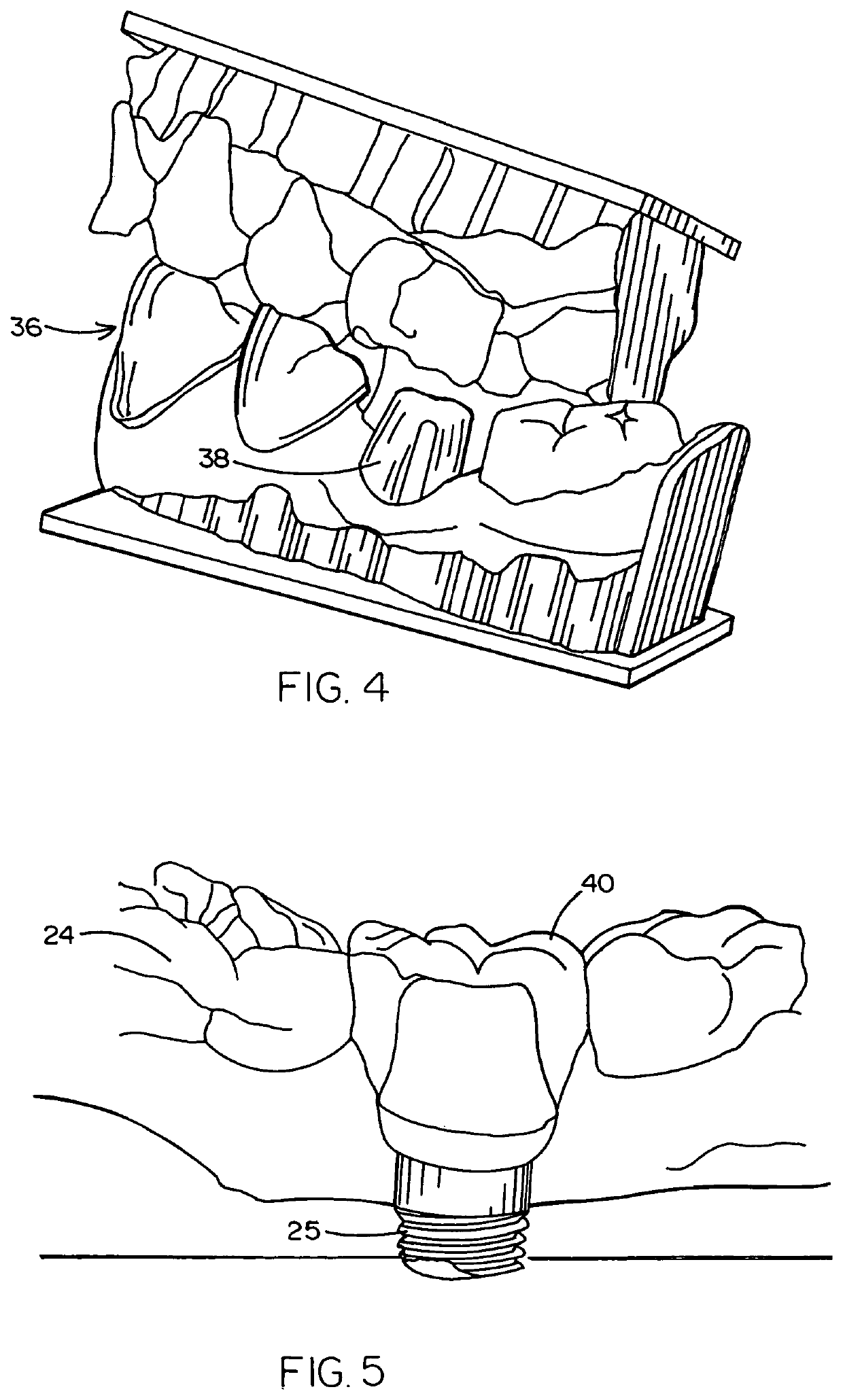Method of designing and fabricating patient-specific restorations from intra-oral scanning of a digital impression coping
a digital impression and scanning technology, applied in the field of restorations, can solve the problems of substantial variability in the design of the restoration, high cost, and potential errors, and achieve the effect of accurate and effective means
- Summary
- Abstract
- Description
- Claims
- Application Information
AI Technical Summary
Benefits of technology
Problems solved by technology
Method used
Image
Examples
Embodiment Construction
[0019]This method of digital implant and abutment level impression taking is similar to conventional methods, but the implant position, angulation and locking feature orientation are captured via intra-oral, computed tomography or other imaging methods instead of with physical impression media. The basic components required to capture an implant or abutment level digital impression and design a restoration from the digital impression are:
[0020]1. A digital impression coping of known dimension, for implant or abutment level, with a flat, radius, slot or other geometrically distinct feature, or features, for determining the implant position, angulation and locking feature orientation.
[0021]2. An intra-oral, computed tomography or other imaging method that can record the digital impression coping(s) and oral anatomy with sufficient accuracy.
[0022]3. A means of correlating the scan of the digital impression coping with a reference digital impression coping thereby deriving the implant(s...
PUM
 Login to View More
Login to View More Abstract
Description
Claims
Application Information
 Login to View More
Login to View More - R&D
- Intellectual Property
- Life Sciences
- Materials
- Tech Scout
- Unparalleled Data Quality
- Higher Quality Content
- 60% Fewer Hallucinations
Browse by: Latest US Patents, China's latest patents, Technical Efficacy Thesaurus, Application Domain, Technology Topic, Popular Technical Reports.
© 2025 PatSnap. All rights reserved.Legal|Privacy policy|Modern Slavery Act Transparency Statement|Sitemap|About US| Contact US: help@patsnap.com



